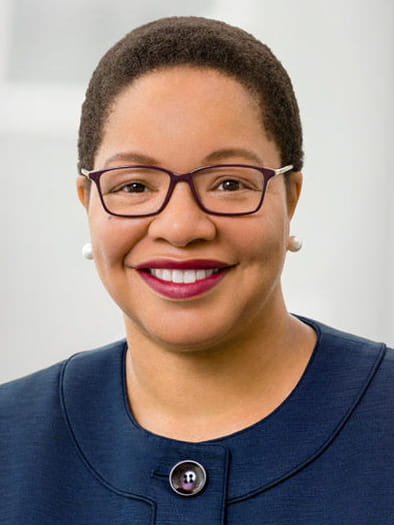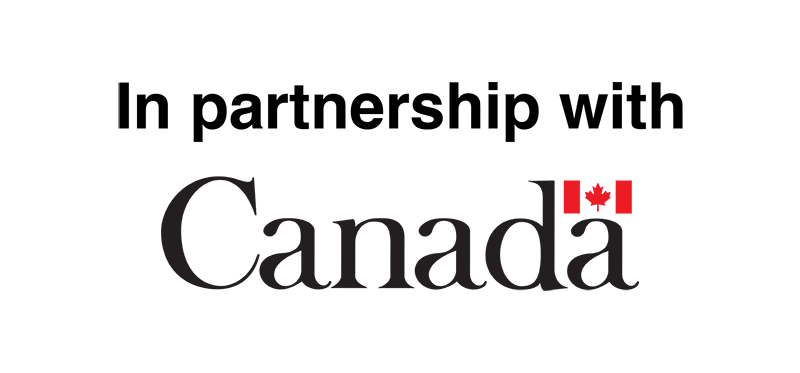Article
Reflections of a Chief Diversity Officer – Leveraging EDI to Drive Culture Change in Organizations
Written by Dr. Denise O’Neil Green
April 28, 2023
This excerpt was extracted from a fireside chat with Dr. Denise O’Neil Green as part of the CICan 50-30 Challenge “Every Woman Counts” webinar series – a virtual space for important conversations to advance workplace EDI across Canada. We invited diverse women across multiple sectors Canada-wide to share their knowledge about issues impacting women and other equity-deserving groups in the workplace. In her chat and in this article, Dr. Green reflected on her professional experience as an EDI leader and offered practical tips for moving the dial on EDI in Canadian workplaces.
Dr. Denise O’Neil Green, President and Principal Consultant,
Denise O’Neil Green Consulting
“I participated in a fireside chat moderated by Alicia Sullivan, EDI Mobilization Advisor, Inclusive Communities at Sheridan College. Drawing upon my experience as a Chief Diversity Officer in Canada and the United States, I shared aspects of my personal and professional journey as the senior and executive officer responsible for EDI and culture change for 14 years in North America. In this article I highlight excerpts and respond in a more fulsome way to some of the questions and topics, speaking to what I believe is vital to any EDI effort and how I navigated challenges and pitfalls.”
1. What inspired you to get started in EDI work?
My first job in EDI was supporting racialized students at a university. I was working at Central Michigan University as the Graduation, Retention and Improvement Program (GRIP) Coordinator. GRIP was an academic success program for racialized students to help them transition from high school to university and successfully graduate within four years. When I was in that role I supported students, and I would talk with faculty and advise them on how they could support racialized students. Running GRIP sparked my desire to continue this line of EDI work. Supporting students of many different backgrounds and recognizing that I loved creating new programs and structures and building new things within organizations compelled me to venture along an EDI career path.
2. What equipped you and gave you the strength to break barriers and stay the course for over three decades?
I’m from Chicago and I grew up in an all-Black neighbourhood. The majority of my teachers and mentors were Black/African American men and women. A particular mentor of mine was Larry Hawkins, a former Harlem Globe Trotter. Mr. Hawkins was fierce and unapologetic about supporting Black youth, who needed support coming from single-parent and low-income families, and who were very smart but needed additional mentoring and support. I bought into Mr. Hawkins’ philosophy of not being a taker, but rather being a giver. That’s my philosophy and approach to doing EDI work. It’s about giving to the community and supporting communities. And I’ve been doing that ever since I started the GRIP program for those students.
3. What did being the inaugural Assistant Vice President, Equity, Diversity and Inclusion and subsequently the founding Vice President for the Equity and Community Inclusion Division mean for you and TMU when you formally initiated EDI work?
Upon being appointed to the role at Toronto Metropolitan University, I was very excited because I thought coming to Toronto, one of the most diverse cities in the world, would enable me to sharpen my EDI skills. However, what I found and observed right away was that while the organization was very happy to have the position, it was not ready for the AVP position and subsequent VP position. My observation was that Canada, across a number of different sectors, was 20 years behind, if not more, in doing EDI work. I believe Canada is behind due to demographic shifts happening much later in Canada than in the U.S.
Many people will espouse EDI, but when it comes to doing or truly supporting EDI work, that’s a very different thing. I was even told by a colleague that someone in a critical leadership role believed the position wasn’t needed. So, I didn’t have a great onboarding experience. On the other hand, there were so many possibilities. Because the organization did not know what it wanted, I had the opportunity to build and create, with the support of many great colleagues and a great team.
4. Probing into the nuts and bolts of strategy, operations, and relationship management, how did you balance all of your roles with effectiveness?
Put simply, I love the work. I’m guilty. I love the work as challenging as it is. And I love working with different types of people from many different kinds of backgrounds, and I believe that part of what helped me is that I have a very clear understanding of how organizations function and work as an organism. While one part of an organization may give you all the support you need; another part of the same organization is working to undermine you. So I understood that there are many different components operating at one time. And because organizations have leaders who often don’t understand the role of a Chief Diversity Officer, I always saw myself as an educator.
You mentioned disruptor, visionary leader, etc. At the position’s foundation, it’s about being an advocate and educator. In doing so, you meet people where they are, so you can help bring them along in an intentional way that results in them becoming your ally and understanding your role. That is very critical. But, in addition to being an EDI expert, you’re also an expert in other things. You’re an expert in politics. You’re an ambassador. You’re a communicator. You’re a leader. You take on all these different personas and different roles in order to operate and bring about the change you’re looking for because ultimately you’re a changemaker. When you’re an EDI professional, you’re stepping into the role of being a changemaker to bring about ways of improving the space.
5. What’s your assessment of EDI today?
My assessment is that after George Floyd’s murder there was an acknowledgment that EDI work was a real thing, important and needed to happen across many different sectors and organizations within this country. In particular, anti-Black racism got more attention. So many organizations hired individuals to work in the capacity of EDI professionals. However, now that we are three years out, various organizations, I’ve heard, have started letting go and laying off their EDI professionals. It’s a mixed bag. Some organizations do not understand that it’s not just a one-and-done. It’s not simply hiring one individual or a few and then your accountability is over. Actually, it’s just the beginning.
There’s still energy out there whereby organizations want to see change. But they don’t quite know how to do it. And then there are other organizations whereby they started down this path, and they’re weary. They didn’t put forward sufficient resources, talent, or commitment needed to change things. And now they’ve moved on to something else. They’ve moved on to another priority. But with this work, you must be persistent, persevere and leadership has to persevere and understand that this is an intentional ongoing journey – I liken it to blazing a path.
6. Share a few things that you did to further build and sustain outcomes during your tenure at TMU.
Building relationships with key individuals across your organization at all different levels is vital. As one person or one office, you can’t do everything. You can’t be everywhere. It’s important to find those individuals and build relationships with those allies who can provide information about what’s happening in the organization, with individuals being your eyes and ears. When I started out I went on a listening tour. I listened to individuals who served on various EDI or Anti-racism committees. I also conducted listening tours with different equity groups. We brought women together and wanted to hear what their concerns and challenges were. We brought together racialized groups; we brought together members of the queer community; we heard from our Indigenous colleagues. We heard from persons with disabilities, and even beyond that. It was about listening, connecting and hearing those concerns with an ear of empathy, recognizing where within the organization’s structure, things needed to change in order to address concerns that were raised.
There was also another thing I did at the beginning. I started this program called Soup and Substance. It’s your typical hour-long lunch and learn, except elevated. We would provide soup and refreshments. No need to bring a brown bag lunch. Faculty, staff, students and community members could attend and grab some refreshments. I would serve as the moderator, and we would touch on different topics that actually came from that listening tour. The panel would have representation from staff/practitioners, faculty/researchers, students/student leaders and administrators/academic leadership. Panelists spoke about the problems and solutions along with the how. It was a way of solving problems together. And it was a way of building community and having people see each other. Soup and Substance sessions were well attended and very successful.
What I did later to sustain things was to put in place a structure along with individuals who could continue to lead those efforts, whether I was there or not. For example, I worked with colleagues to integrate findings from an accessibility audit to be built into the facilities’ renovation schedule.
7. Based on your experience in senior and executive roles in higher education on both sides of the border, what single most vital ingredient is required for enabling lasting EDI change in organizations? What big mistake did you make as an EDI leader and how did you navigate that?
The important ingredient for these roles is that oftentimes they are not properly resourced, and resources span the gamut. There’s staffing, space, funding and communications support. It comes in many different forms, whatever that support is. Resources are often lacking but are the key ingredient.
One of the mistakes I would say I made is that I didn’t properly communicate enough about what it was we were doing because we were so busy doing the work. We had our heads down and got the work done. From my perspective, you have a short window to make things happen, and once that window closes the work becomes much harder. Whether it’s a window of influence or a window whereby the organization is ready to move on, there is a need to move quickly. But you can’t do that and not communicate to the community what it is you’re doing because you need their support throughout your journey. Reporting out to the community in a structured versus ad hoc way so that they know what’s happening and can make the path clear for you when and where they can, is important. I would advise any person in these roles to put together a one-page, short report that shares 1) what you did, 2) where you had an impact and 3) where you plan to go next.
8. What pearls of wisdom would you like to leave for decision-makers (people with power and influence) about how to lead/transform EDI culture? And what would you say to EDI practitioners as they keep at this challenging and important work?
For those who are in positions of power and influence, I would say, provide your EDI professionals with what they need. Ask them what kind of support they need and actually give it to them. Don’t simply give them lip service. Provide space for there to be disruption in the organization. If you’re asking for someone to do EDI work, that means you’re asking them to disrupt the status quo.
For EDI professionals, do good, and be well! I must say that one of the things I decided for myself after leaving the role I had at TMU and starting my own EDI consulting business, I embraced a new mantra. My mantra now is to do good work but also be well. So in the work that you’re doing, support people, support yourself, but also be well because these roles can be very demanding of your time, physical and emotional health; very often requiring periods of 24-7 and “building the plane as you’re flying it.” So step back, give yourself the space to get what you need, whether that means being physically well, mentally well, emotionally well or spiritually well. Those are my parting words. And if you need to leave the space because you’ve given it your best, and it’s time to move on, that’s okay, too.
This article was developed as part of CICan’s 50 – 30 Challenge Ecosystem partnership with ISED. Interested in learning more? We encourage you to visit our website for resources, personalized one-on-one support and training to support your organization on their EDI journey. Keep up to date by signing up for our mailing list.





